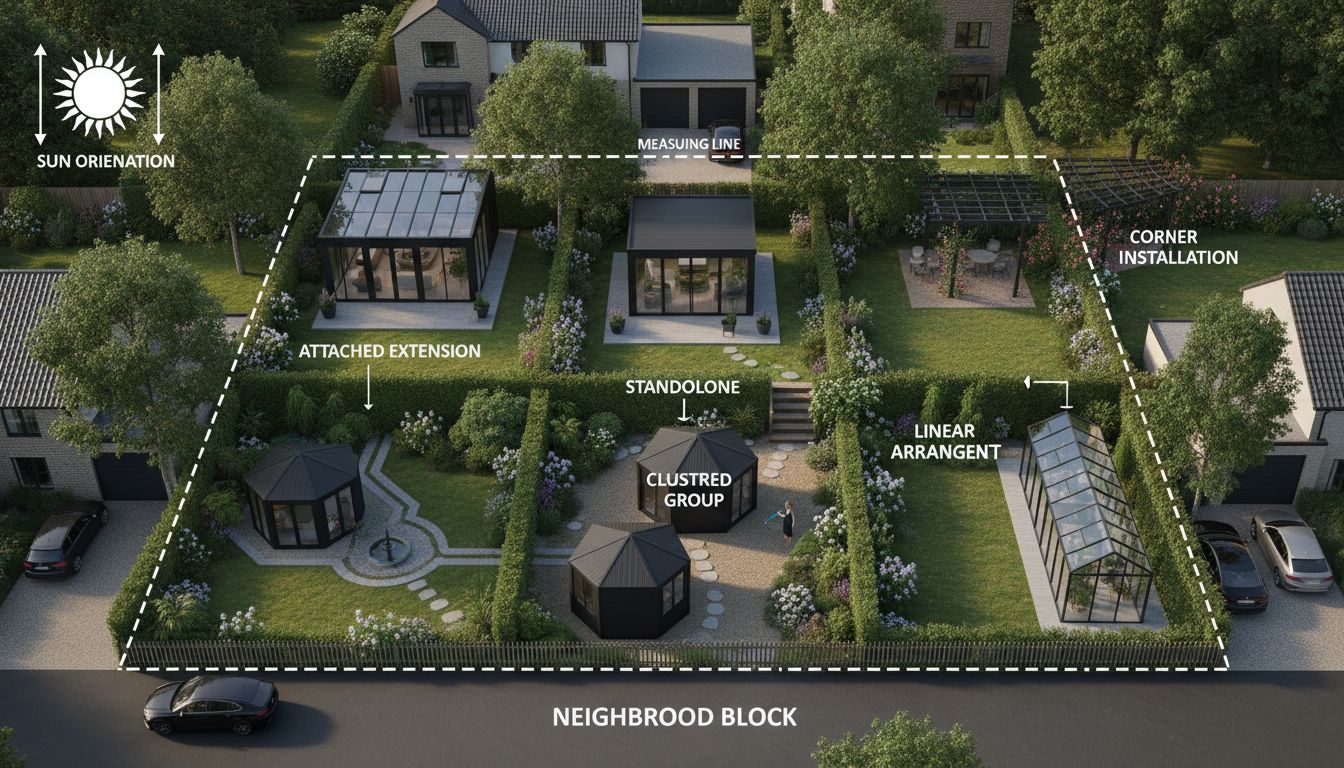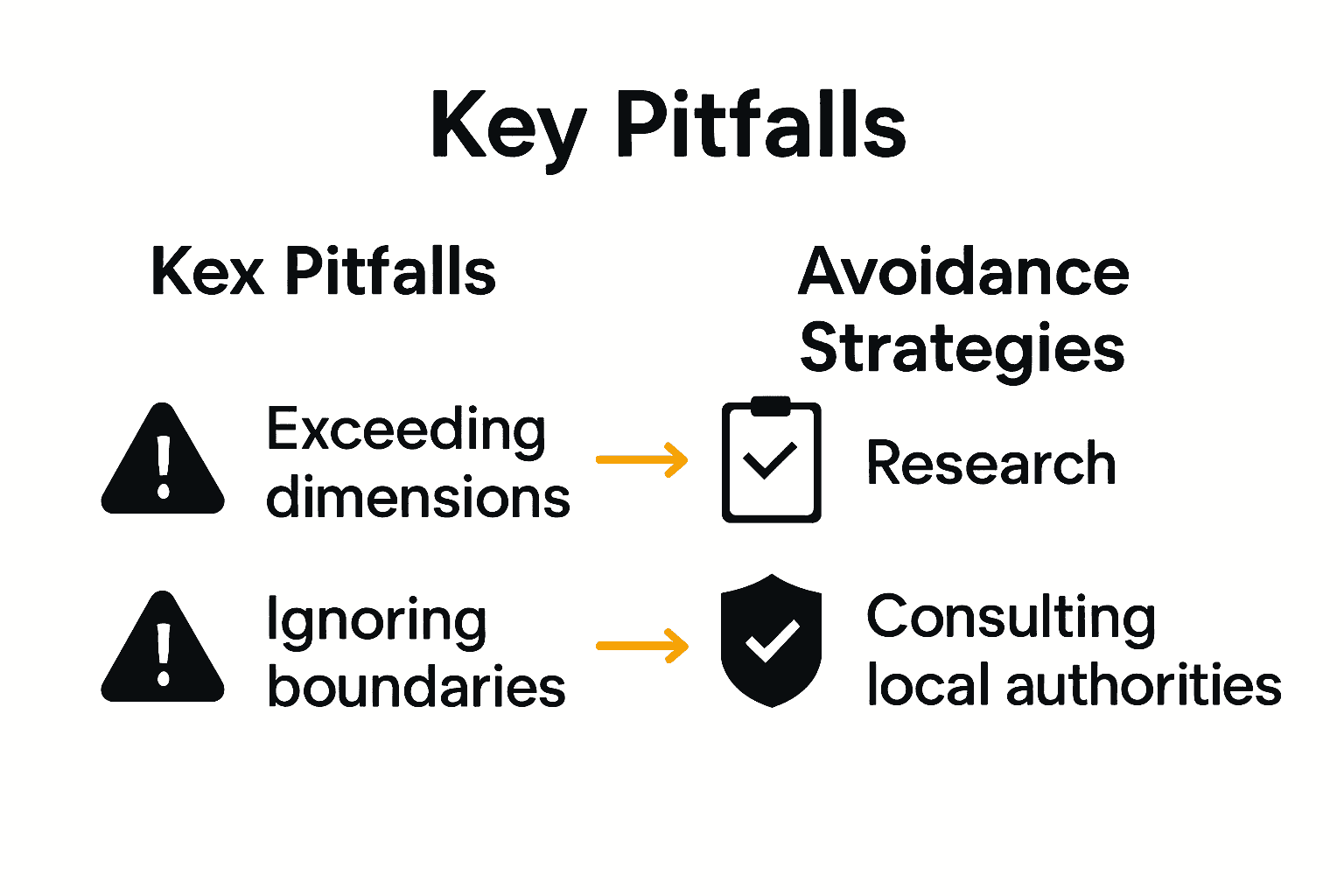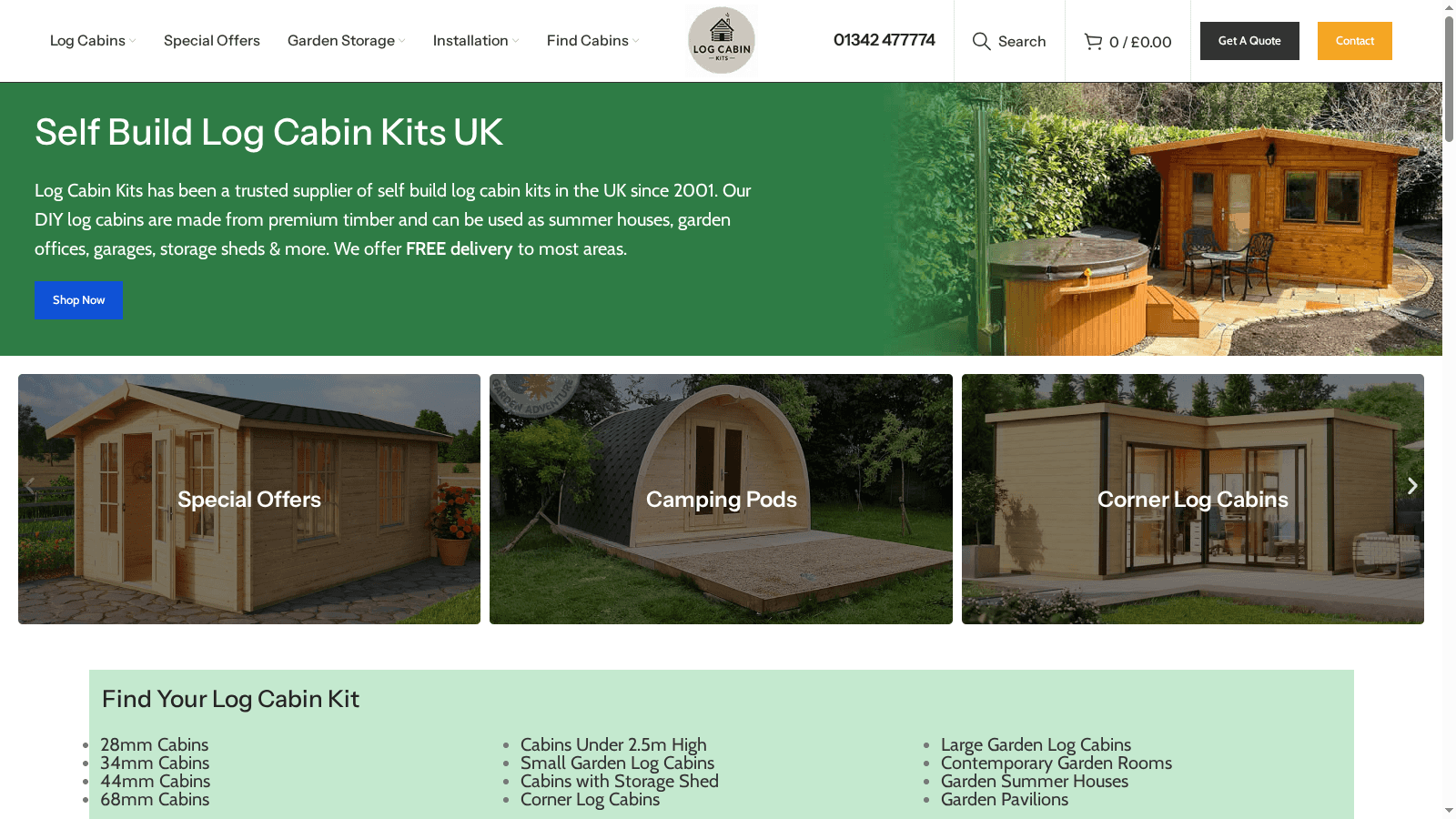Blog
Call Now 01342 477774
Space Planning for Garden Buildings: Complete Guide

More than half of garden building projects in the UK require tailored design to make full use of available space and avoid costly mistakes. The way you plan these spaces not only affects how the building looks but also how it fits into your daily life and outdoor routines. With thoughtful space planning, you can turn any corner of your garden into a practical and inviting extension that meets your needs while staying within legal guidelines.
Table of Contents
- Defining Space Planning For Garden Buildings
- Types Of Garden Building Layouts
- Essential Steps In Space Planning Process
- UK Regulations And Planning Permissions
- Common Pitfalls And How To Avoid Them
Key Takeaways
| Point | Details |
|---|---|
| Comprehensive Space Planning | Integrate architectural factors with practical needs to maximize garden building potential. |
| Type Variations in Layouts | Choose layout types (standalone, attached, clustered, etc.) based on space and intended use. |
| Essential Planning Steps | Conduct site analysis, assess functional requirements, and refine design concepts for optimal results. |
| Regulatory Awareness | Understand local regulations to avoid costly mistakes and ensure compliance during construction. |
Defining Space Planning for Garden Buildings
Space planning for garden buildings is a strategic design process that transforms outdoor areas into functional, purposeful extensions of your living environment. According to research from arxiv.org, this approach involves carefully integrating architectural considerations with practical optimization techniques to generate efficient design solutions.
At its core, space planning is about understanding the potential of your garden and matching that potential with your specific needs. This goes beyond simply choosing a location for a garden building – it involves comprehensive analysis of several critical factors:
- Spatial dimensions and available area
- Intended usage of the garden building
- Natural landscape characteristics
- Sunlight exposure and orientation
- Proximity to existing structures
As highlighted by gov.uk, effective space planning also requires carefully defining boundaries and understanding how different spaces interact. This means considering not just the garden building itself, but how it relates to your broader outdoor and indoor environments.
The goal of thoughtful space planning is to create a harmonious design that feels both intentional and natural. Whether you’re planning a home office, studio, or recreational space, the right approach can transform a simple garden building into a seamless extension of your living area that enhances both functionality and aesthetic appeal. The Benefits To Having A Garden Room can provide additional insights into maximizing your garden building’s potential.
Types of Garden Building Layouts
Garden building layouts are diverse and adaptable, offering numerous configurations to suit different spaces and purposes. As rhs.org.uk highlights, garden design styles range from compact urban solutions to expansive, wildlife-friendly arrangements, each presenting unique opportunities for garden building placement and integration.
Garden Building Layout Categories typically include:
Here’s a comparison of common garden building layout types:
| Layout Type | Description | Typical Use Cases |
|---|---|---|
| Standalone Structures | Independent, detached from the home | Studios Home offices |
| Attached Extensions | Connected to main house | Utility rooms Guest rooms |
| Clustered Layouts | Grouped smaller buildings | Workshop clusters Garden suites |
| Linear Arrangements | Placed in sequential or parallel lines | Storage rows Greenhouse combos |
| Corner Installations | Positioned in unused garden corners | Compact workspaces Reading nooks |
- Standalone Structures: Independent buildings positioned strategically within garden spaces
- Attached Extensions: Buildings connected directly to existing home structures
- Clustered Layouts: Multiple smaller buildings grouped together
- Linear Arrangements: Buildings placed in sequential or parallel configurations
- Corner Installations: Buildings positioned to maximise unused garden corners
Interestingly, en.wikipedia.org demonstrates how architectural innovation can transform garden building layouts, using the Sheffield Winter Garden as an exemplar of creative spatial design that seamlessly integrates structures with surrounding environments.
When considering layout options, homeowners should evaluate factors like available space, landscape topography, sunlight exposure, and intended building function.
 Other Garden Buildings can provide additional inspiration for designing a layout that complements your specific garden characteristics and personal aesthetic preferences.
Other Garden Buildings can provide additional inspiration for designing a layout that complements your specific garden characteristics and personal aesthetic preferences.
Essential Steps in Space Planning Process
The space planning process for garden buildings requires a systematic and strategic approach that transforms abstract ideas into concrete design solutions. According to research from arxiv.org, this involves integrating parametric models and optimization techniques to generate efficient and adaptable design frameworks.
The essential steps in developing a comprehensive space planning strategy include:
- Site Analysis
- Measure available garden dimensions
- Assess topographical characteristics
- Evaluate soil conditions and drainage
- Identify natural sunlight patterns
- Consider existing landscape features
- Functional Requirements Assessment
- Define primary building purpose
- Determine spatial needs and usage
- Establish size and capacity requirements
- Plan for potential future adaptations
- Design Conceptualization
- Sketch initial layout proposals
- Create multiple design iterations
- Balance aesthetic and practical considerations
As highlighted by gov.uk, effective space planning critically involves defining clear boundaries and understanding how different spatial zones interact. This means considering not just the garden building’s immediate footprint, but how it integrates with broader outdoor and indoor environments.
The final stage involves refinement and optimization, where design concepts are evaluated against practical constraints and personal preferences.
How To Buy Or Build A Home Office In The Garden can provide additional insights into translating these planning principles into tangible garden building solutions.
UK Regulations and Planning Permissions
Navigating the landscape of UK regulations for garden buildings requires careful understanding and strategic planning. According to planningportal.co.uk, there are specific conditions under which garden buildings can be constructed without requiring formal planning permission.
Key Permitted Development Criteria for garden buildings typically include:
- Maximum building height of 2.5 metres
- Total floor area not exceeding 15 square metres
- Located behind the principal elevation of the property
- No sleeping accommodation permitted
- Located at least 2 metres from property boundaries
These guidelines are not universal and can vary depending on specific local authority interpretations. Compliance Considerations homeowners must evaluate include:
- Property location (conservation areas have stricter rules)
- Existing permitted development rights
- Previous building work on the property
- Specific site constraints
As highlighted by gov.uk, adhering to planning policies is crucial for achieving appropriate development practices. For comprehensive guidance on navigating these complex regulations, Do I Need Planning Permission For My Log Cabin offers detailed insights into making informed decisions about your garden building project.
Common Pitfalls and How to Avoid Them
Space planning for garden buildings is fraught with potential mistakes that can derail even the most carefully conceived projects. According to planningportal.co.uk, many homeowners unknowingly fall into traps that can result in costly corrections or legal complications.
Major Pitfalls to Watch Out For:
- Overlooking Local Regulations
- Ignoring boundary restrictions
- Exceeding permitted development dimensions
- Failing to consider neighbour consultations
- Misunderstanding usage limitations
Strategic Avoidance Techniques:
- Conduct thorough preliminary research
- Consult local planning authorities
- Document all measurements meticulously
- Understand your specific permitted development rights
- Consider potential future modifications
As highlighted by gov.uk, the key to avoiding design pitfalls lies in creating clear, well-defined spatial boundaries and understanding intricate regulatory landscapes. Professional guidance can make a significant difference in navigating these complex requirements. Do I need building regulations approval for my log cabin provides additional insights into avoiding potential regulatory missteps in your garden building project.

Transform Your Garden with Expert Space Planning and Custom Garden Buildings
Struggling to bring your garden building vision to life while managing space constraints and planning restrictions? This guide highlights the importance of strategic space planning to create functional, beautiful outdoor structures that perfectly fit your needs. Whether it’s a home office, studio, or a tranquil retreat, understanding spatial dimensions and layout options is key to unlocking your garden’s full potential.

Discover how our bespoke garden buildings at Log Cabin Kits can be tailored to your garden’s unique characteristics and comply with UK regulations. Don’t let common pitfalls like poor space use or planning permission failures hold you back. Take the next step now to design a garden building that enhances your lifestyle. Start exploring options at logcabinkits.co.uk and bring your outdoor space to life today.
Frequently Asked Questions
Space planning for garden buildings is a strategic design process that optimizes outdoor areas into functional extensions of your living space, considering factors like spatial dimensions, intended use, and natural landscape characteristics.
Common garden building layouts include standalone structures, attached extensions, clustered layouts, linear arrangements, and corner installations, each catering to different needs and garden characteristics.
The essential steps include site analysis, functional requirements assessment, design conceptualization, and refinement, ensuring that the garden building meets both practical and aesthetic needs.
Key regulations include maximum building height, floor area limitations, positioning relative to property boundaries, and restrictions on sleeping accommodations. It’s important to consult local guidelines to ensure compliance.
Recommended
- The Benefits To Having A Garden Room - Log Cabin Kits to Buy Online
- What Is The Best Time Of Year To Buy A Garden Building - Log Cabin Kits to Buy Online
- Best Small Garden Sheds for Compact Spaces | Log Cabin Kits
- Do I Need Planning Permission For My Log Cabin - Log Cabin Kits to Buy Online
- Garden Fence Installation Process: Build Your Own Fence in 2025 - Fence Guru | Australian Fencing Suppliers
